




















Integratinghealthmanagementwithfinancialplanningisessentialfor
achievinglong-termwell-beingandfinancialsecurity.Manyindividuals focusprimarilyonbuildingwealth,butneglectinghealthcanleadto significantfinancialburdens.Forinstance,healthcarecostsforacoupleaged65 andolderexceeded$350,000in2022,excludinglong-termcareexpenses.This statistichighlightstheimportanceofconsideringhealthasavitalcomponentof financialplanning.
Therelationshipbetweenhealthandwealthisreciprocal.Poorhealthcanlead toincreasedmedicalexpenses,whichmaydepletesavingsandaffectfinancial goals.Conversely,financialstresscannegativelyimpactmentalandphysical health.Tomitigatetheserisks,individualsshouldadoptaholisticapproachthat includeshealthmanagementintheirfinancialstrategies.
Oneeffectivemethodistoprioritizepreventivecare.Regularcheck-upsanda healthylifestylecanhelpavoidchronicconditionsthatleadtocostly treatments.Furthermore,incorporatinghealthinsuranceintofinancialplansis crucial.Insuranceprotectsagainstunexpectedmedicalexpenses,allowingfor betterbudgetingandfinancialstability.
Additionally,utilizingHealthSavingsAccounts(HSAs)canprovidetax advantagesformanaginghealthcarecosts.Theseaccountsallowindividualsto savemoneyspecificallyformedicalexpenses,reducingthefinancialstrain duringretirement.Ultimately,integratinghealthmanagementwithfinancial planningnotonlysafeguardsagainstfuturemedicalcostsbutalsopromotesa healthier,morefulfillinglife.Byrecognizingtheinterconnectednessofhealth andwealth,individualscancreateamoresustainableandsecurefuture.
Highlightingonesuchleaderinthisfield,InsightsSuccessfeaturesKavita AtulSinghasthecoverstoryinitslatesteditiontitled “Top Eminent Leader To Watch In 2024.” Herexceptionalcontributionsasapublichealthexpertand medicaldoctorreflectaprofoundcommitmenttoimprovinglives,further emphasizingtheimportanceofintegratinghealthintobroadersocietal frameworks.
Have a great read ahead!
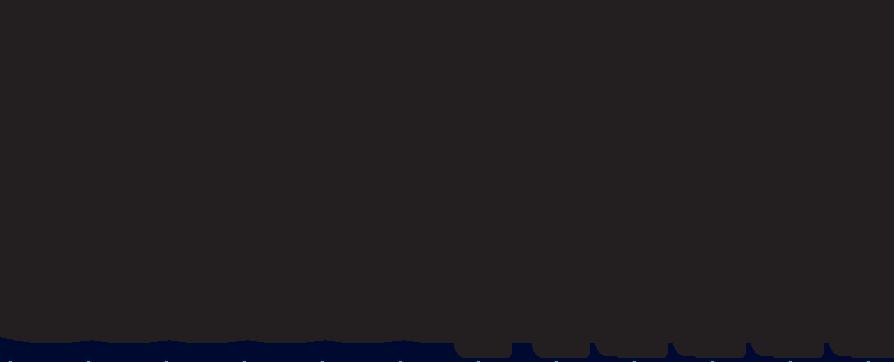
Managing
Art
Business
Business
Digital
Co-designer
Marketing

Finn







Kavita Singh: Integra�ng Health Management and Financial Planning
14.
How Medical Training Prepares Doctors for Public Health Challenges
18.
Top 10 Public Health Challenges Facing Medical Professionals Today
22.
Revolu�onizing Care: Top 5 Healthcare So�ware Development Trends to Watch in 2024

At Kavy Enterprises LLC, our mission is clear—to empower individuals with financial intelligence.
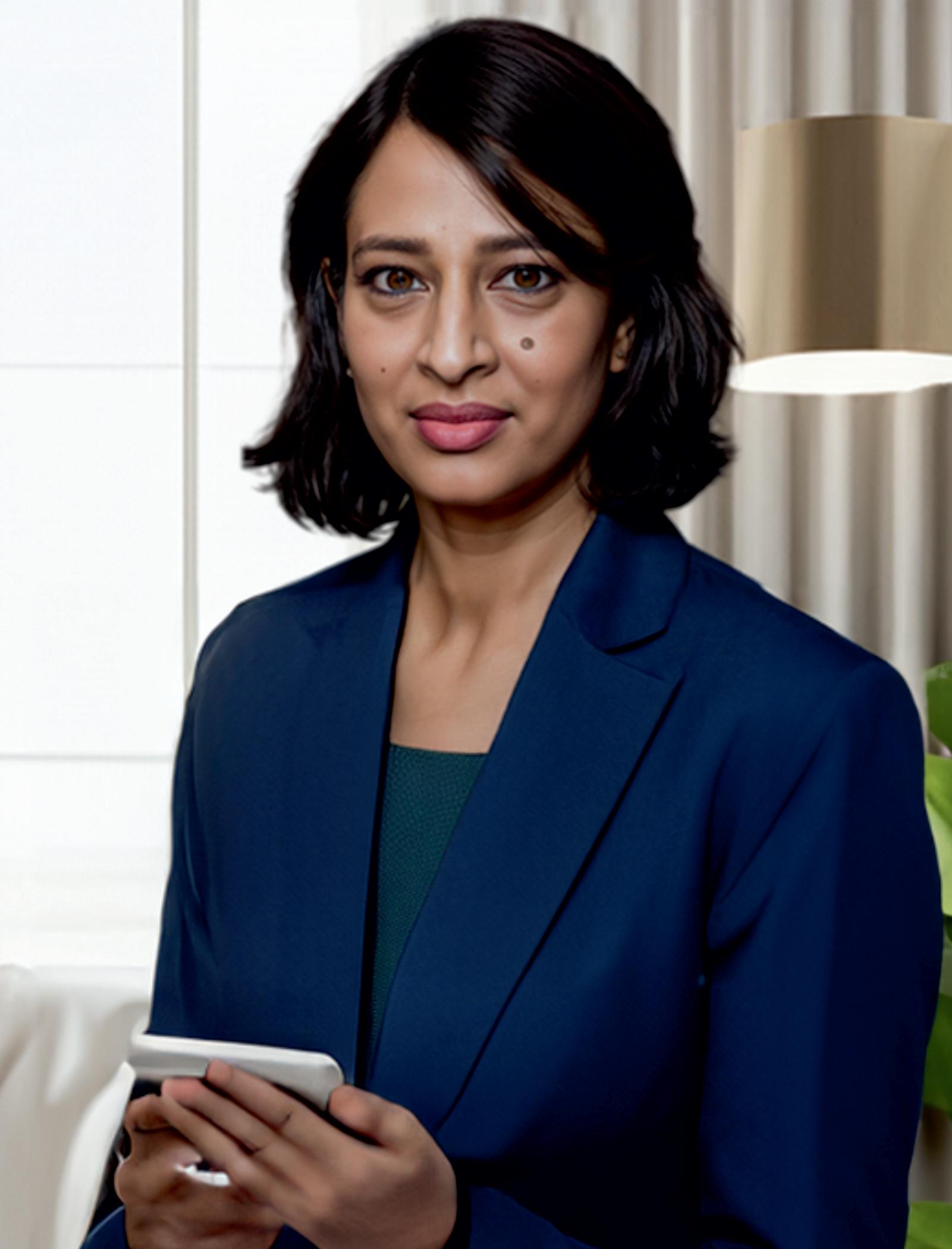

Publichealthandhealthcare managementisademanding arenawhereexceptional dedicationandexpertisearethe hallmarksofsuccess.These professionalsnavigatecomplexissues, fromdiseasepreventiontoensuring qualitycare,requiringbothadeep understandingofhealthcaresystems andatirelesscommitmentto improvingpublichealthoutcomes.
KavitaSinghstandsoutasaseasoned publichealthexpertandmedical doctorwithaprofoundcommitmentto improvinglives.Aftergraduatingfrom MedicalSchool,Kavitaembarkedona careerintheIndianArmyMedical Corps,whereshewitnessedfirsthand thetransformativeimpactofpublic healthmeasuresonsoldierhealthand broaderpopulationwellness.Inspired byherexperiences,Kavitatransitioned tointernationalnon-governmental organizations,focusingondiverse publichealthinitiativesspanning reproductivehealth,maternalandchild health,andHIV/AIDSandtuberculosis controlprograms.
Drivenbyapassionformakinga systemicdifference,Kavitalater relocatedtotheUS,drawnbyfamily tiesandmotivatedbythechallenges facinghealthcareaccess.Pursuingan MBAinhealthcareadministration deepenedherunderstandingofthe intricateworkingsoftheUShealthcare systemandinsurancelandscape.This knowledgepromptedhertodelve furtherintothefinancialaspects affectingseniorsinretirement, particularlythetoughdecisionsthey facebetweenhealthcarecostsand financialsecurity
Volunteeringataseniorlivingfacility exposedKavitatofirsthandaccountsof thesechallenges,ignitingherresolveto findsolutions."I started finding ways to manage personal finances so that
families wouldn't have to sacrifice healthcare access for financial stability,"sherecalls.Thispassion culminatedintheestablishmentof KavyEnterprisesLLC,aimedat educatingindividualstomake informedfinancialdecisionsand optimizeavailableresourcesforlongtermwealthcreation.
"At Kavy Enterprises LLC, our mission is clear: to empower individuals with financial intelligence,"Kavitaasserts. "We strive to help families build and preserve wealth, ensuring they can cover costly healthcare needs in retirement without depleting their savings."Hervisionencompassesa stress-free,secureretirementforall families,achievedthrougheducation andstrategicfinancialplanning.
Asan Adjunct Faculty Member atthe College of Health,Kavitaalsoshares herexpertisewithfuturehealthcare leaders,enrichingthenextgeneration's understandingofhealthcare managementandpublichealth policies.Hermultifacetedapproach underscoresasteadfastdedicationto bridginghealthcareandfinancial literacy,ensuringsustainablesolutions thatresonateacrossdiverse communities.
Let us learn more about her journey:
FinancialEmpowermentfora HappyRetirement
Kavita'sapproachtoclient developmentcentersaroundfinancial education."I inform them how financial products work, what kind of financial products and services are available in the market,"sheexplains, emphasizinghergoaltoempower clientswithknowledge.Herpreferred methods—financialeducationwebinars andone-on-onesessions—haveproven highlyeffective.
"My purpose is to educate people to the extent that they understand what to do next to protect, build, and preserve their retirement wealth,"Kavita asserts.Herultimateaimisclear:"To live a long, happy, healthy, stress-free retirement life."Throughherefforts, Kavitastrivestoensurethat individualsareequippedtomake informedfinancialdecisionsthat supporttheirlong-termwell-being.
Balancingacademiaandbusiness seamlesslyissecondnaturetoKavita. "My motivation comes from helping and educating people,"sheasserts.In heracademicrole,sheeducates studentsontheprofoundeffectsof publichealthmeasuresandpolicies. "These measures reduce sickness, increase life expectancy, and improve the quality of human life,"she emphasizes.
Transitioningtoherbusinesspersona, Kavitaeducatesindividualsonthe transformativeimpactoffinancial productsandservices.Herfocusison creating,building,andprotecting wealthfrommarketrisks,ensuringa stress-freeretirement.Sheunderscores theironythat"living too long is a byproduct of good public health policy implementation."
Digitalsolutionshaveprofoundly impactedeveryaspectoflife,observes Kavita,reflectingonherexperiences spanningfromherearlydaysinthe ArmytoherroleasaTuberculosis ConsultantwiththeWHO."Way back in the late nineties, I started digitizing all the training material for battlefield nursing assistants and NCC Women Officers,"sherecalls,notingthe pioneeringeffortsonMS-DOSbefore theadventofWindows.
My purpose is to educate people to the extent that they understand what to do next to protect, build, and preserve their retirement wealth.




Kavita focuses on creating, building, and protecting wealth from market risks, ensuring a stress-free retirement.

"Today, digital transformations have revolutionized medical education, diagnosis, doctor visits, prescriptions, medical records, and health insurance payments,"Kavitastates.Herwork withtheWHOfocusedon implementingGene-Xpertlaboratories, whichdrasticallyreducedthetimefor rifampicin-resistanttuberculosis diagnosisfrom10daystothesame day."Itwasasignificantleapfrom traditionalmethods,"shereflects.
Lookingforward,Kavitaseesthe burgeoningroleofArtificial Intelligenceinhealthcareaspivotal. "These technologies not only promise to lower healthcare costs but also to mitigate racial biases and enhance healthcare equity,"sheasserts.Her optimismreflectsabeliefinthe transformativepowerofdigital innovationstoshapeamoreefficient andequitablehealthcarelandscape.
"I am here for lifelong business; even if I help one person a day, I feel accomplished,"Kavitaaffirms.Her approachrevolvesaroundeducating clientsindividually,aimingto empowerthemwithadeep understandingofthefinancialindustry anditsproducts."When people
understand how financial products work, they can make informed decisions for themselves and their families,"sheexplains.
Kavitarecognizesacriticalgap:"Most middle-class people do not hire costly financial advisors, and financial intelligence is not taught in schools or colleges."Thislackofeducation,she believes,contributestowidespread financialuncertainty."Education is the key to making people moneywise,"she assertspassionately
Throughhercommitmenttoeducation andempowerment,Kavitastrivesto equipindividualswiththeknowledge neededtonavigatetheirfinancial futuresconfidently,fosteringfinancial independenceandsecurityoneclientat atime.
"The cost of healthcare in the US is significantly higher compared to anywhere else in the world,"states Kavita,highlightingastarkreality "Sixty-seven percent of bankruptcies in the US are due to medical debt, affecting over 100 million people,"she emphasizes.
Kavitaaddressesacommon misconception:"Many believe Medicare will cover all their healthcare needs after age 65, but it only provides for 100 days of care per year."Thislimitationposesacritical questionforretireesandtheirfamilies: "What if more than 100 days of care are needed? How will they afford it?"
Recognizingcostastheprimarybarrier tohealthcareaccessintheUS,Kavita educatesherclientsonleveraging financialproductsavailableinthe market."I empower them to create wealth for their retirement,"she explains,aimingtoequipindividuals
withthetoolsandknowledgeneeded tosecuretheirfinancialfuturesamidst risinghealthcareexpenses.
"At Kavy Enterprises LLC, we implement various strategies tailored to each client's unique financial situation,"Kavitaexplains."Every family has distinct needs, and our approach is personalized accordingly," sheadds.
"Our focus is on providing education and assisting families in planning for their specific goals,"Kavita emphasizes.Thesegoalsencompass comprehensivefinancialplanning, includingpreparingforhealthcare expensesnotcoveredbyinsuranceor Medicare,disabilityincome,long-term care,guaranteedretirementincome, tax-freeretirementoptions,funding children'scollegeeducation,and safeguardingwealththroughestate planning.
"I stay current with the latest trends and best practices in healthcare management through active networking and attending conferences and workshops, both physically and virtually,"Kavitaaffirms.This commitmentallowshertoremain informedaboutadvancementsin healthcareadministration,ensuringshe canapplythemosteffectivestrategies andinsightstobenefitherclientsand thecommunitysheserves.
"Healthcare is at a critical juncture, poised for transformation,"Kavita observes."Changes are inevitable, and healthcare providers must adapt or
Today, digital transformations have revolutionized medical education, diagnosis, doctor visits, prescriptions, medical records, and health insurance payments.
face obsolescence,"sheasserts. Lookingforward,shehighlightsthe imminentimpactofartificial intelligence(AI),notingitspotentialto revolutionizenotjusthealthcarebut multipleindustries.
Kavitaemphasizestheimportanceof healthcareprovidersembracingthese technologicaladvancementstothrive inthefuture."Technological advancements, including AI, offer opportunities to scale services to underserved and rural areas,"she explains.Byleveragingthese innovations,healthcareproviderscan enhanceaccessibilityandeffectiveness, ultimatelyimprovinghealthcare deliveryandoutcomesforall.
Throughouthercareer,Kavitahas achievednumerousmilestonesthat haveshapedherjourneytosuccess. "While serving in the Army Medical Corps, I was one of the few women officers deployed in active battlefield areas,"sherecallsproudly This experiencenotonlyhonedher leadershipskillsbutalsoshowcased herabilitytoexcelindemandingand criticalenvironments.
"As a WHO consultant,"Kavita continues,"I spearheaded the creation of 4 regional monitoring units in India's most populous and underdeveloped state."Herefforts aimedatimprovingprogram monitoringwerepivotal,particularlyin therealmoftuberculosismanagement. "I optimized tuberculosis drug supply chains by enhancing coordination between state and district stores,"she explains,underscoringtheimportance ofeffectivelogisticsinpublichealth.
Kavita'scontributionsalsoextendedto healthcareinnovationthroughthe establishmentofGene-Xpert laboratories,facilitatingtherapid diagnosisofdrug-resistant tuberculosis."These experiences taught me the transformative impact of public health policies and effective management on community health," shereflects.

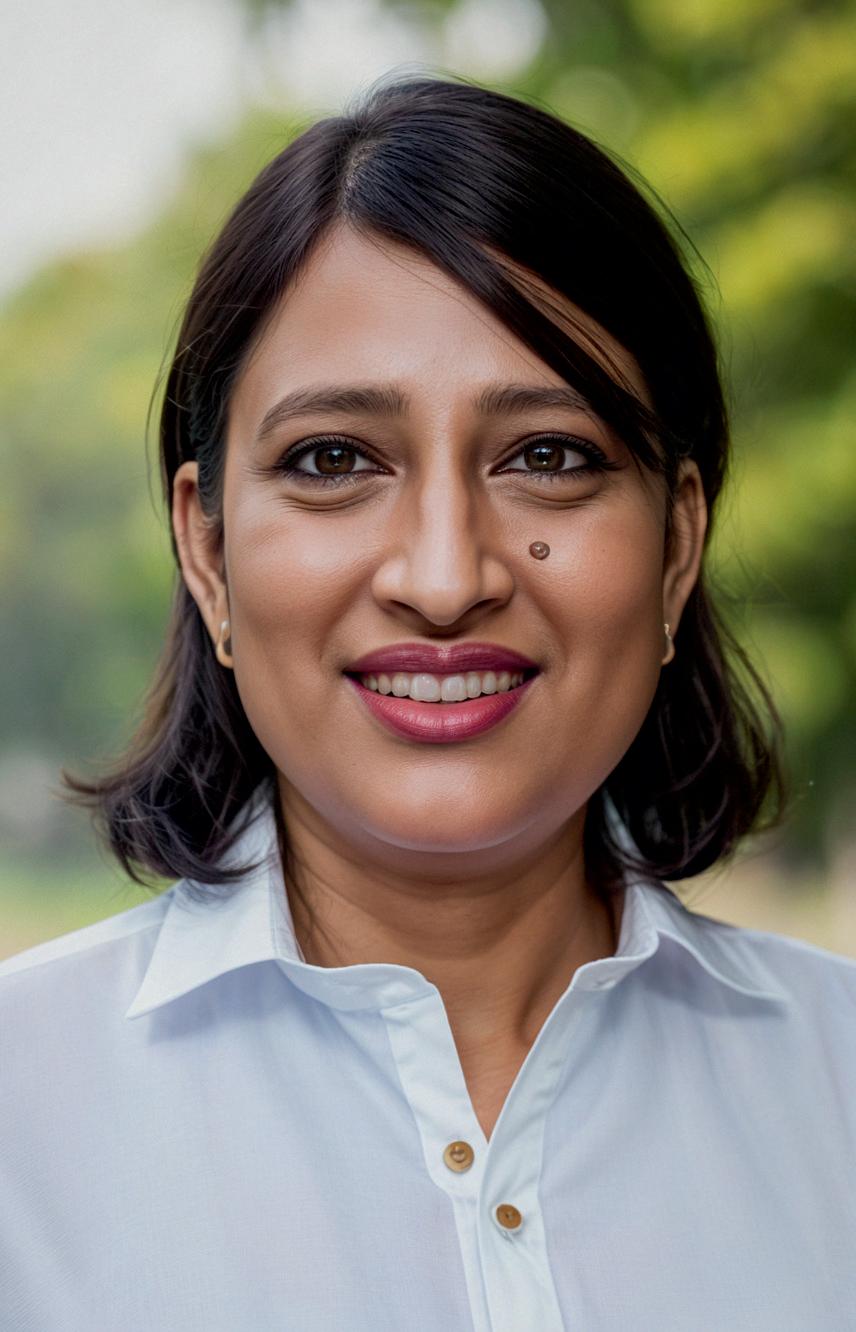

Success is not how high you have climbed, but how you make a positive difference to the world.
- Roy T. Bennett
Medicaltrainingisevolving tomeetthepressingpublic healthchallengesofour time.Asthelandscapeofhealthissues shiftsfromprimarilycommunicable diseasestoamixofchronicconditions andsocialdeterminantsofhealth,the needforphysicianstobewell-versed inpublichealthprincipleshasnever beenmorecritical.
Let us explore how medical education is adapting to prepare future doctors for these challenges.
Traditionally,medicaleducation focusedheavilyonclinical skills—diagnosingandtreating individualpatients.However, contemporaryhealthchallengesrequire abroaderperspective.Forinstance,the riseofnon-communicablediseases suchasdiabetesandheartdisease necessitatesanunderstandingofhow lifestyle,environment,andsocial factorsinfluencehealthoutcomes. Medicalschoolsareincreasingly integratingpublichealthtraininginto theircurriculatoequipstudentswith thenecessarytoolstoaddressthese complexissues.
Asignificantchangehasbeenthe incorporationofpublichealthtopics intotheMedicalCollegeAdmission Test(MCAT).TheupdatedMCATnow includessectionsthatemphasize psychology,sociology,andbiology, reflectingtheimportanceof understandingthesocialand behavioralaspectsofhealth.Thisshift
indicatesarecognitionthateffective healthcaregoesbeyondindividual treatmentandrequiresa comprehensiveunderstandingof populationhealth.
Medicaltrainingnowemphasizesthe importanceofaddressinghealth disparitiesandsocialdeterminantsof health.AccordingtotheAmerican MedicalAssociation,theCOVID-19 pandemichighlightedsignificantgaps inpublichealthinfrastructureand equity,exposingtheurgentneedfor physicianstoengagewithpublichealth systems.Asaresult,medicalschools areprioritizingtrainingthatprepares studentstotackletheseissueshead-on.
Statisticsshowthataboutoneinfour U.S.medicalschoolgraduatesfeel inadequatelypreparedinpublichealth topics.Toaddressthis,many institutionsareexpandingtheir curriculatoincludemoduleson biostatistics,epidemiology,andhealth policy.Additionally,joint-degree programsthatcombineamedical degree(MD)withaMasterofPublic Health(MPH)arebecomingmore common,allowingstudentstogaina deeperunderstandingofbothclinical andpublichealthpractices.
Onlineresources,telemedicine,and healthappsprovidestudentswith innovativewaystoengagewithpublic healthtopicsandreachdiverse populations.Forexample,duringthe COVID-19pandemic,manymedical schoolsshiftedtoonlinelearning, makingeducationmoreaccessibleand allowingstudentstocontinuetheir trainingdespitedisruptions.
Moreover,technologyenhancesthe abilityoffuturephysiciansto communicatehealthinformation effectively.Withtheriseofsocial media,physicianscannowsharevalid healthinformationwithpatientsand communities,empoweringthemto makeinformeddecisionsabouttheir health.Thisshifttowardamore interactiveandcommunity-focused approachisessentialinaddressing publichealthchallenges.

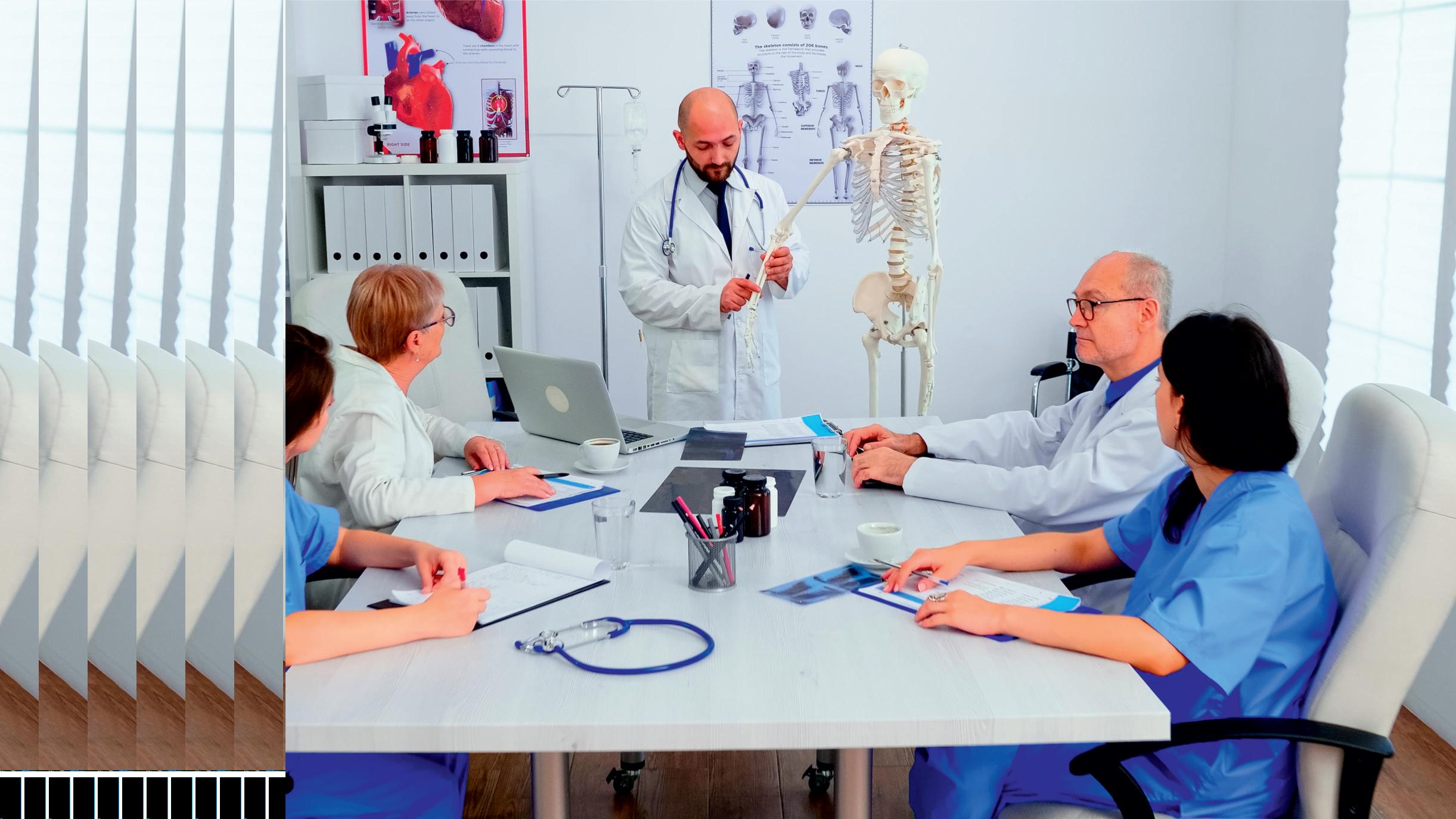
Theintegrationoftechnologyinto medicaleducationhastransformed howstudentslearnaboutpublichealth.
Anothercriticalaspectofmodern medicaltrainingistheemphasison interdisciplinarycollaboration.Future physiciansarebeingtaughttowork alongsidepublichealthprofessionals, socialworkers,andcommunity organizationstocreatecomprehensive healthsolutions.Thisapproachnot onlybroadenstheskillsetofmedical graduatesbutalsofostersacultureof teamworkthatisessentialin addressingcomplexhealthissues.
Forinstance,medicalstudentsare increasinglyinvolvedincommunity healthinitiatives,wheretheycanapply
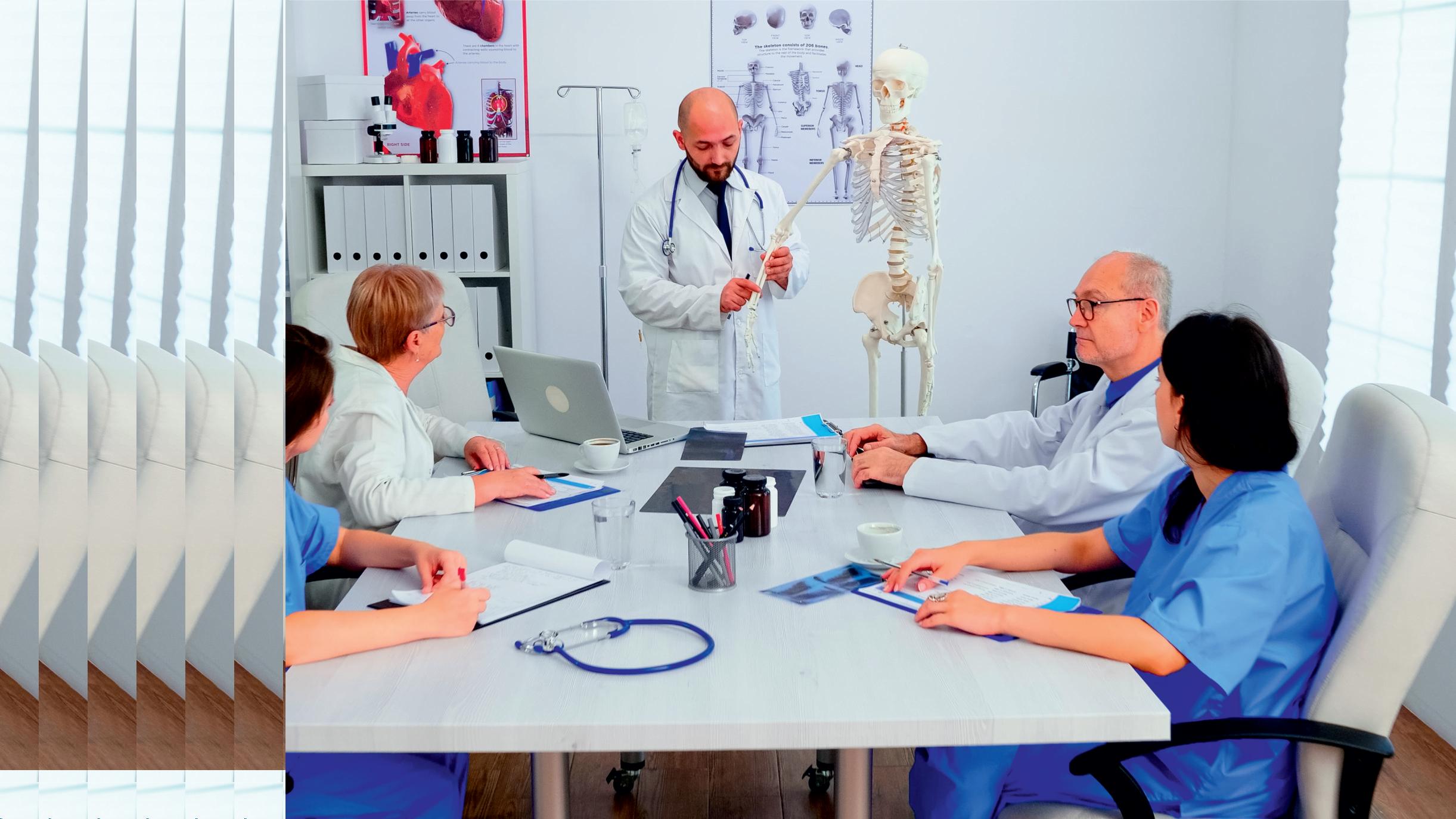
theirknowledgeinreal-worldsettings. Theseexperienceshelpstudents understandthedirectimpactofsocial determinantsonhealthandthe importanceofpreventivecare.By engagingwithcommunities,future doctorscanbetterappreciatethe challengestheirpatientsfaceand developmoreeffectivetreatmentplans.
Aswelooktothefuture,the integrationofpublichealtheducation intomedicaltrainingislikelyto continueevolving.Thechanging landscapeofhealthcaredemandsthat physiciansnotonlypossessclinical

skillsbutalsounderstandthebroader contextofhealth.Thisincludes recognizingtheinfluenceofsocial, economic,andenvironmentalfactors onpatienthealthandwellbeing.
Thecommitmenttoimprovingpublic healtheducationisreflectedinthe increasingnumberofmedicalschools thatarerevisingtheircurriculato includeamorecomprehensive approachtohealtheducation.Thisshift iscrucialforpreparinganew generationofphysicianswhoarenot onlyskilledintreatingdiseasesbut alsoequippedtoaddressthe underlyingcausesofhealthdisparities.
Inconclusion,medicaltrainingis adaptingtomeetthechallengesof publichealthbyincorporatinga broaderunderstandingofhealth determinants,emphasizing interdisciplinarycollaboration,and utilizingtechnologytoenhance learning.Asfuturephysiciansare trainedtonavigatethesecomplexities, theywillbebetterpreparedto contributetoahealthiersociety.This holisticapproachtomedicaleducation isessentialfortacklingthe multifacetedhealthchallengesweface todayandinthefuture.
,, Successisnotthekeyto happiness.Happinessisthekeyto success.Ifyoulovewhatyouare doing,youwillbesuccessful.
- Epictetus







Astheworldcontinuesto evolve,thehealthcareindustry facesamyriadofchallenges thatrequiretheattentionandexpertise ofmedicalprofessionals.From managinginfectiousdiseasesto addressingmentalhealthcrises,these challengesdemandacomprehensive andproactiveapproachtoensurethe well-beingofindividualsand communities.
Here are the top 10 public health challenges that medical professionals are currently facing:
TheCOVID-19pandemichas highlightedtheimportanceof preparednessandadaptabilityinthe faceofemergingviralthreats.Medical professionalsmuststayinformedabout thelatestdevelopments,implement effectivepreventionstrategies,and collaboratewithpublichealth authoritiestomitigatetheimpactof COVID-19andotheremergingviruses.
Theprevalenceofmentalhealth disordersandsubstanceabusehasbeen exacerbatedbytheCOVID-19 pandemic.Medicalprofessionalsmust prioritizementalhealth,provideaccess toappropriatetreatment,andaddress thestigmaassociatedwiththese conditions.
Non-communicablediseases,suchas cardiovasculardisease,diabetes,and cancer,areontherise,oftenlinkedto lifestylefactorslikeunhealthydiets andphysicalinactivity.Medical professionalsmustpromotepreventive measures,earlydetection,andeffective managementstrategiestocombatthese chronicconditions.
Despiteadvancementsindisease control,infectiousdiseasesremaina significantthreattopublichealth. Tuberculosis,malaria,HIV/AIDS,and hepatitiscontinuetoposechallenges, particularlyinlow-resourcesettings. Medicalprofessionalsmustworkto reducetransmission,improvetreatment outcomes,andaddressunderlying socialdeterminantsofhealth.
Ensuringthehealthandwell-beingof mothersandchildreniscrucialforthe overallhealthofapopulation.Medical professionalsmustaddressissuessuch asinadequateprenatalcare,lackof skilledbirthattendants,andpoor nutritiontoimprovematernalandchild healthoutcomes.
6.EnvironmentalHealth
Environmentalpollution,includingair, water,andsoilcontamination,poses serioushealthrisks.Medical professionalsmustadvocatefor policiesthataddressenvironmental healthissues,promotesustainable practices,andeducatethepubliconthe linkbetweenenvironmentalfactorsand health.
Disparitiesinaccesstoquality healthcareservicespersist,particularly amongunderservedandmarginalized communities.Medicalprofessionals mustworktoeliminatebarrierstocare, promotehealthliteracy,andadvocate forpoliciesthatensureequitable accesstohealthcare.
8.AntimicrobialResistance
Theoveruseandmisuseofantibiotics haveledtotheemergenceofdrug-
resistantbacteria,makinginfections moredifficulttotreat.Medical professionalsmustpromote responsibleantibioticstewardship, supportthedevelopmentofnew antimicrobials,andimplement infectionpreventionandcontrol measures.
Threatstoglobalhealthsecurity,such aspandemics,bioterrorism,andnatural disasters,requireacoordinated internationalresponse.Medical professionalsmustcollaboratewith globalhealthorganizations,participate indisasterpreparednessplanning,and contributetothedevelopmentof resilienthealthsystems.
10.AgingPopulationandPalliative Care
Astheglobalpopulationages,the demandforlong-termcareand palliativeservicesincreases.Medical professionalsmustadapttotheunique needsofolderadults,provide compassionateend-of-lifecare,and supportcaregiverstoensurethebest possiblequalityoflifeforaging individuals.
Toaddressthesechallenges,medical professionalsmuststayinformed, advocateforevidence-basedpolicies, collaboratewithmultidisciplinary teams,andprioritizethehealthand well-beingofindividualsand communities.Byworkingtogether,we canovercomethesechallengesand buildahealthierfutureforall.

Leadership is not about being in charge, Its about taking care of those in your charge.
- Simon Sinek
Thehealthcareindustryisconstantly evolving,withthetrendsconstantly dictatingthepaceofhealthcarebeing moresophisticatedandstreamlined. Theentirehealthcaredelivery landscapehaschangedwiththe introductionoftechnologyand, specifically,healthcaresoftwarein administration,management,and healthcaredelivery.Ithasnotonly madehealthcaremoreaccessiblebut alsomadediagnosismoreaccurateand muchfasterforcaredelivery.
Healthcaresoftwaredevelopment trendsthatenterandstayinthemarket areoftentheresultoftheneedofthe healthcareindustryandproblemofthe healthcareproviders.However,some ofthetrendsarealsotheresultof advancementsintechnology,suchas remotepatientmonitoring,or leveragingAIforearlydisease detection.
AIinhealthcareisheretostaylikeitis theretostayinmostoftheindustries acrosstheglobe.However,whilethe healthcareindustryismovingatahigh pacetowardssophisticationdirectedby healthcaresoftwaredevelopment trends,youshouldbeknowingthem beforemakinganinformeddecision.
So,tosimplifyitforyouandhelpyou inchoosingwhichtrendwouldbemost suitableforyourpractice,herearethe top5healthcaresoftwaredevelopment trendsin2024thatyoushouldkeepan eyeon.
Having said that, without further ado, let’s get started!
TheRiseofArtificialIntelligence, akaAIinHealthcare
Inhealthcare,beforedrawinga conclusionaboutaperson’shealthand decidingonacareplan,therearemany thingsthatleadtoit.Forinstance, medicalimaginganalysis,disease prediction,medication,etc.Thisis whereAIinhealthcarecomesintothe picture.Whilesomeareashavebeen significantlyimprovedwiththe introductionofAI,suchasanalysis,the areathathasmostlybenefitedfromAI isindeeddrugdiscovery
AIhasenhancedtheentireprocessand fasteneditwithaccuracyandprecision. Apartfromthat,leveragingAIfor earlydiseasedetectionisoneofthe mostimpactfulandpopularhealthcare softwaredevelopmenttrendsin2024.
Takingitastepfurther,AI-powered chatbotshavebeenintroducedin healthcaresoftware,andtheyhave beeneffectivelyusedtoprovidebasic orgenerichealthcareservicesto patients.WithAI-poweredchatbots, patienteducationhasbeenenhanced, andsomewhere,ithasalsomade healthcareaccesssophisticatedfor patients.Thebestexampleofthiscan beseeninappointmentscheduling, reminders,andfillingthegapsofcare leftbehindduetothehighpressureon healthcareproviders.
Anotherhealthcaresoftware developmenttrendthatisgaining tractionistheadoptionrateof telehealthsolutions.Insomeofthe statesoftheUnitedStates,the adoptionrateshaveexceeded90%, whichisclosingthegapsincare effectivelyandmakingcareavailable forpatientsinunderservedandrural areas.Telehealthsolutionscombined withremotepatientmonitoringhave madeitconvenienttoaccesscare withouttheneedtospendmuchtime andmoneyaccessingit.
Ontheotherhand,with90%patient satisfactionrate,telehealthhasbecome thegotomodeofreceivingcarefor chronicdiseasemanagement.To supportthis,CMSprogramslike chroniccaremanagementandremote patientmonitoringarecontributing heavilytomakingtelehealtha mainstreamaspectofhealthcare delivery.
Advancementsinhealthcare technologyhavealsointroduced AR/VRinhealthcare.Thishasopened anewwindowofopportunitiesin healthcaredelivery Today,alongwith telehealth,AR/VRinhealthcareis beingusedtoprovideimmersive therapyandgivepatientsanelevated experience.
Thiswouldgiveyouabriefideaof howtelehealthsolutionsareoneofthe




topprioritiesforhealthcareproviders. Furthermore,telehealthsolutionsare potentiallygoingtobeoneofthemost popularhealthcaresoftware developmenttrends,giventheburden onhealthcareprovidersandthe introductionofsmartdevicesin healthcareforremotepatient monitoringwhichwillprobably enhancetheentirehealthcaredelivery.
Healthcaresoftwaredevelopmentwill becomeanormin2024andwill continuetodosoashealthcaremoves towardsacompletelydigitalecosystem andinfrastructure.Decodingoneofthe mostpopularhealthcaresoftware developmenttrendsduringthis transitionstageininteroperabilityand datasharing.Beforegettingintothe details,let’sfirstunderstandwhat exactlyinteroperabilityisandwhyitis soimportantforthehealthcareindustry movingforward.
Well,interoperabilitycanbesimply definedastheabilityofthecomputer systemtoexchangeinformationwith othersystemsandmakesenseofit. Sincethehealthcareindustryis interdependentonvarioushealthcare serviceproviders,thesystemsmust seamlesslyexchangeinformationfor appropriatecaredelivery
Now,ashealthcareprovidersare adoptingvarioushealthcaresystems, interoperabilityforaccuratedata sharingwillbecrucial,especiallyfor providersdealingwithelectronic healthrecords(EHR).Thoughsomeof thehealthcaresystemshaveadopted theHL7standardfordataexchange,it isawalkintheparkforhealthcare systemstoachieveinteroperability.
Apartfromthat,thereisahighchance ofdatalossortheftduringthe
transitionprocess.Toavoidthis,itis importantforhealthcaresystemsto achieveinteroperability,andgiventhe needforseamlessdelivery,itisoneof themostpopularhealthcaresoftware developmenttrendsin2024.
Alongwiththat,theriseofblockchain technologyhasalsosparkedanew trendforinteroperabilityand cybersecurityinhealthcare.Blockchain technologywillnotonlyprovidea securesystemofseamlessdatasharing butalsobringtransparencyinthe systemwhichwillbeessentialfor sophisticationofthehealthcare industry.
Oneofthemostdistinctwaysto capitalizeonthesehealthcaresoftware developmenttrendsistouseopensourceEHRsystems.Thiswillenable widespreadadoptionofEHRsystems, whichwillhelpyouincreatinga secureandwell-connectedecosystem ofhealthcaresystems.Addingacherry ontopwillalsohelpincustomization andmakedatasharingmucheasierand streamlined.
Withsmartwatches,therelevanceof smartdevicesinhealthcarehasbecome moreprominent.Theyhavenotonly helpedinremotepatientmonitoring butalsoempoweredustokeeptheir healthalwaysincheck.Thesewearable devicesareusedtomonitorvitalsigns, recordsleeppatterns,andperform certainhealthactivitiesforpatients. However,smartdevicesare independentdevicesthatcannot automaticallytransferdatafrom themselvestothepatient’sor provider’ssystem.
Toenablethis,anmHealthappor mobilehealthapplicationisrequired.
Thesesmartdevicesinhealthcare, connectedtotheuser’smobilephone withthehelpofamHealthapp,would notonlyprovidethepatientwithan interfacetoviewtheirhealthreading butalsoallowthecollecteddatatobe easilytransmittedtotheprovider’s systemalmostinstantlyforreal-time continuousmonitoring.
ThesemHealthappsarealsousedto increasemedicationadherenceand remindpatientsoftheirappointments. Takingitastepfurther,some healthcareorganizationshavealso enabledpersonalizedmedicationand providedservicesthathelppatients managetheirhealthbetter,promoting self-care.
Beingoneofthebiggesthealthcare softwaredevelopmenttrendsin2024, itisalsobreakingitstraditional barriersandintroducingnewwaysof careandself-caremanagement.Oneof theexamplesofthisisgamificationin mHealthappstokeeppatientsengaged intheirhealthcarejourney.So,if you’rebettingonaprofitable healthcaretrend,thenAIinhealthcare withmHealthAppisthewaytogo.
Lastbutnotleast,cybersecurityin healthcareisoneofthehealthcare softwaredevelopmenttrendsthatlies intheshadows.Thedatahealthcare applicationsdealwithiscrucial, personalandcanrevealmanyaspects ofaperson’slifestyleandchoice.That isthereasonthehealthcareindustryis pronetocyber-attacks,andtheriskis increasingwiththewideadoptionof healthcaresystems.
However,findingopportunityinthis cybersecurityinhealthcareisgaining tractionofmanyhealthcareproviders acrosstheglobe.Today,ransomware

threatsinhealthcareITarecommon butimplementingrobustcybersecurity measurestoprotectpatientdatahas becomecruciallyimportant.
Someofthewaystoensure cybersecurityinhealthcarefor safeguardingandmaintainingthe privacyofhealthcaredataaregiven below:
• Implementingstrongaccess controls
• Strongdataencryption
• Regularupdatestoaddress securityvulnerabilities
• Regularpenetrationtestingto identifyandaddressloopholesin thenetworkdefenses
• Effectiveandhands-onemployee training
Conclusion
Inanutshell,thesefivehealthcare softwaredevelopmenttrends mentionedaboveareeitherdrivenby industryneedsortechnological advancements.However,asthe healthcareindustryslowlymoves towardsacompletelydigital ecosystem,thesefivetrendscandefine theindustry’sprogressionintothe future.
Allthesehealthcaresoftware developmenttrendshavethepotential torevolutionizehealthcareforboth patientsandproviders.WhileAIin healthcareisalreadyleadingtherace withpersonalizedmedicine,drug discovery,andstreamliningcare delivery,othertrendsareemphasizing manyaspectsofhealthcaredelivery
So,ifyourpracticeisstuckinthis digitaltransitionofthehealthcare industry,choosethebesthealthcare softwaredevelopmenttrendsthatsuit yourpracticeandgetstartedwiththe transition.Ifyou’reconfusedabout
wheretostart,hereisyourfree consultationcalltohelpyoudecidethe roadmapforthefutureofyour healthcarepractice.
WhatistheroleofAIinhealthcare softwaredevelopment?
AIinhealthcareistransforming healthcaresoftwaredevelopmentby:
• Analyzingvastdatasetsto improvedrugdiscovery,medical imaginganalysis,andpersonalized medicine.
• Poweringchatbotsandvirtual assistantsforpatientsupportand basicmedicaladvice.
• Streamliningtasksandimproving efficiencyforhealthcareproviders.
Howdoestelemedicinebenefit patientsandhealthcareproviders?
Hereishowtelemedicinecanbenefit bothpatientsandproviders:
• Patients:Offersconvenientaccess tocare,reducestraveltime,and improvesappointmentflexibility.
• Providers:Enhancesefficiency, expandsreachtoremotepatients, andimprovespatientsatisfaction.
Whyisblockchainimportantfor healthcaredatasecurity?
Blockchaincansignificantlyimprove healthcaredatasecuritybycreatingan immutableandtamper-proofledgerfor medicalrecords.Thismeansany changestoapatient'sdatacanbe trackedandverified,makingitmuch harderforhackerstoaccessoralter sensitiveinformation.
WhatistheInternetofMedical Things(IoMT)?
TheInternetofMedicalThings(IoMT) referstoanetworkofmedicaldevices thatcollectandsharepatientdata wirelessly Thesedevicescaninclude wearableslikefitnesstrackers, implantslikepacemakers,and monitoringequipmentinhospitals. IoMTallowsforremotepatient monitoring,improvedchronic conditionmanagement,andbetter overallcare.
Whatfeaturesshouldahealthcare mobileapphave?
Ahealthcaremobileappshould empowerpatientstomanagetheir healthconveniently.Keyfeatures include:
• Schedulingappointments
• Managingprescriptions
• Securelyviewingmedicalrecords
• Communicatingwithdoctorsvia chatorvideocalls
• Trackinghealthdata(e.g.,vitals, fitness)
• Receivingappointmentreminders andmedicationrefillalerts
Howcanhealthcareproviders ensuretheirsoftwareissecure?
Healthcareproviderscanstrengthen softwaresecurityby:
• Regularlyupdatingsoftwarewith securitypatches.
• Implementingstrongaccess controlslikemulti-factor authentication.
• Encryptingpatientdatato safeguardsensitiveinformation.
Whataretheregulatory considerationsforusingAIin healthcare?
UsingAIinhealthcareinvolves regulationsregardingdataprivacy, bias,andtransparency
• HIPAAcompliance:EnsureAI toolscomplywithHIPAA regulationstosafeguardpatient dataprivacy
• Algorithmicbias:Bemindfulof potentialbiasesinAIalgorithmsto ensurefairandequitablecare.
• Transparency:Maintain transparencyinAIdecisionmakingprocessestobuildtrust withpatientsandproviders.
HowcanIgetstartedwith implementingtelehealthsolutions?
Hereistheeasy4-stepguidefor implementingtelehealthsolutionsand getstarted:
• Assessyourneeds:Identifyhow telehealthcanbenefityour practice.
• Researchtechnology:Find HIPAA-compliantplatformsthat integratewithyourworkflow.
• Reviewregulations:Ensureyou meettelehealthregulationsfor yourarea.
• Trainstaff&patients:Prepare yourteamandpatientsforvirtual visits.


,, ,,

Wealth consists not in having great possessions, but in having few wants.
Coaching is unlocking a person's potential to maximize their growth. ,,
- John Whitmore







